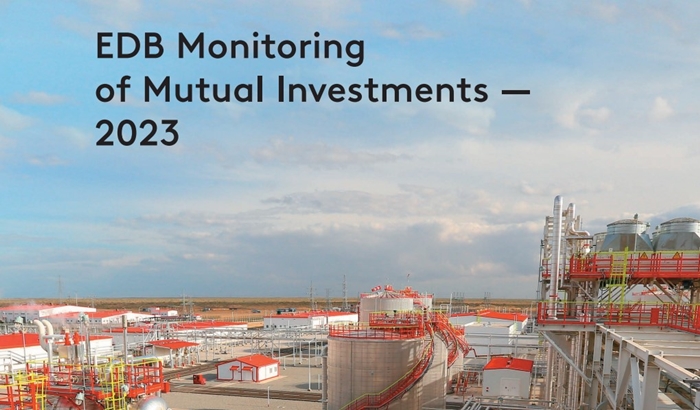The volume of foreign direct investment (FDI) in Central Asia is estimated at US$ 1.1 billion by the end of the H1 2023, marking a 1.8-fold increase from 2016. This is stated in the report of the Eurasian Development Bank “EDB Monitoring of Mutual Investments 2023”.
EDB analysts note that by mid-2023, the volume of FDI from Eurasian countries reached US$48.8 billion, following a 5.4% increase in 2022 and with continued growth in 2023.
Kazakhstan reinforced its status as the regional leader in terms of inward mutual direct investment stock, with a share of 27.2% as of June 2023 against 26.6% in 2021, followed by Uzbekistan (19.8%), Belarus (12.0%), Russia (9.8%) and Azerbaijan (8.7%).
EDB researchers note that the volume of foreign direct investment in Central Asia in the first half of 2023 amounted to $1.1 billion, an increase of 1.8 times compared to 2016.
The key mutual capital investment targets include Extractive Industries (31.7%), Manufacturing (25.0%), and Financial Services (21.9%).
The main internal investors in the region are Kazakhstan (87%), and Uzbekistan (13%). The largest investment recipient in Central Asia is Kyrgyzstan, with 63% of total mutual FDI. It is followed by Uzbekistan (24%) and Kazakhstan (11%).
The largest projects in the region are being carried out by Kazakhstan’s Kaz Minerals, United Cement Group, Halyk Bank, and Verny Capital, and by Uzbekistan’s Artel and Alliance Textile.
The countries of the Eurasian region are regarded as high-priority targets by Turkish investors. The share of the EAEU in Turkish direct investment stock increased from 1.6% in 2017 to 5.1% in 2022. Russia and Kazakhstan are among the non-EU countries that Turkish investors find most attractive.
The report notes that In Central Asia, Chinese investments exceed Russian investments by a factor of 2.3. At the end of 1H 2023, Chinese investments amounted to US $55.9 billion, Russian investments to US $23.8 billion. Both countries show the most interest in the region’s Extractive Industries.
In the medium term, changes in mutual investments in the Eurasian region may be somewhat erratic due to the financial constraints faced by Russian companies, and the mounting uncertainty. According to EDB estimates, mutual investment trends in the Eurasian region are as follows:
- The “geopolitical distance effect”will continue to play an important role. The share of the EAEU member states in mutual investments in the Eurasian region will be increasing.
- Dynamic growth in Manufacturing.This trend will be supported by stronger industrial co-operation, spurred by dwindling western imports. One notable example is TechnoNICOL, a Russian company which started the construction of a plant for the production of rock wool heat and sound insulators in Kazakhstan in 2022.
- Transport and Logistics are becoming increasingly attractive for investors.This can be attributed to the realignment of commodity flows, primarily those traversing Central Asia, and the plans of Russian marketplaces to create local distribution centres in the countries of Central Asia.
- Increase in capital investments by Russia in the countries of the Eurasian region.Capital investments that were previously intended to expand markets in the west will probably be redirected to the EAEU member states and the countries of Central Asia.
- Mutual FDI in Financial Services and Telecommunications will likely suffer from stagnation.The current trend is explained by the exodus of Russia’s and Kazakhstan’s largest banks from several countries of the region. Telecommunications projects are also ebbing away.
- Modest increase in “green” investments.In 1H 2023, there were only six “green” projects in the region, accounting for 1% of total investments.
The report “EDB Monitoring of Mutual Investments – 2023” is available here: https://eabr.org/en/analytics/special-reports/edb-monitoring-of-mutual-investments-2023/
///nCa, 20 December 2023
